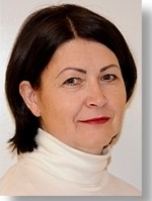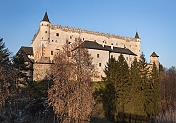 |
Ladies and gentlemen,
|
Zvolen is one of the oldest cities in Slovakia. Its territory, situated at the confluence of the Hron and Slatina rivers, in the south-western part of the picturesque Zvolen basin, has been inhabited since prehistoric times due to its advantageous geographical location and favorable natural conditions. In the Middle Ages, it was situated among an important long-distance commercial route, which brought the original settlement an important business function, which created the conditions for the establishment and development of the future city. The importance of the settlement was confirmed later by King Belo IV., giving Zvolen city privileges as early as 1238 A.D. The rare past of the town and especially the frequent royal residency during the Middle Ages are reminded today by its most important historical landmarks - Zvolen Castle and Dreary Castle. The national cultural landmark Zvolen caste, nobly situated on a gentle hill above the city square, is one of the greatest gems of medieval architecture in Slovakia. It was comprehensively reconstructed in the 1960s, and since 1969 is home to the Slovak National Gallery exhibition. Another important national cultural landmark in the territory of Zvolen are the ruins of Dreary castle - the former residence of the Zvolen royal committee, is located 2 km southwest above the city. In the vicinity of the castle you will find many nature trails acquainting visitors with historical and natural attractions.
The central area of the city is the Square of the Slovak National Uprising (SNP) with a pedestrian zone, which is one of the largest in Central Europe. It is dominated by the Gothic Roman Catholic parish Church of St. Elizabeth from the 14th century and the Evangelical Church of the Holy Trinity, which was created by the gradual reconstruction of the town house. The square is lined on both sides by historic burgher houses, the oldest of which date from the 15th century. The Monument to the Fallen Soldiers of the Soviet Army and the Monument of the Fallen Soldiers in the SNP "Valaška" are connected with the modern history of the town. After extensive reconstruction during 2002 - 2008, the square now provides space for social gathering, entertainment and relaxation. Its charm is completed by the city greenery together with the historic “Ľudovít Štúr” Park on its northern side. Southwest of the square next to the castle there is another Park Ing.Š.Višňovského, in which a model of an armored train made during the SNP is on display.
The former royal city of Zvolen has gradually changed its appearance and is now a modern city that is developing and growing rapidly. It is the administrative, economic and cultural-social center of the district and the seat of several public and state administration institutions. The city belongs to the more industrially developed northern part of the Banská Bystrica region, with a developed engineering, woodworking, construction and food industries and due to its advantageous geographical location it is also an important hub of road and rail transport, with the international airport Sliač nearby. Zvolen is also perceived as an important center of education and science with a network of schools and research institutes. It is the seat of the Technical University, which is the only one in Slovakia that educates specialists in forestry.
The congress in our city will deal with the Application of the latest knowledge about pain in practice, Tumor Pain, Non-Tumor Pain, Palliative Medicine, Interventional Algesiology and Nursing Care in Algesiology. In interventional pain treatment and palliative medicine, we would like to provide space for our sections. Our committee considers it necessary and beneficial to provide space for experts in all these areas.
Dear colleagues, we believe that you will experience pleasant moments in our city and in addition to the quality professional part of the program, we will be able to create a space for you to get acquainted with the history, present and culture of our city.
We want you to take home with you a lot of nice and beneficial experiences from the professional and social program of the congress and to gain a lot of new and pleasant memories.
MUDr. Jana Zdechovanová |

